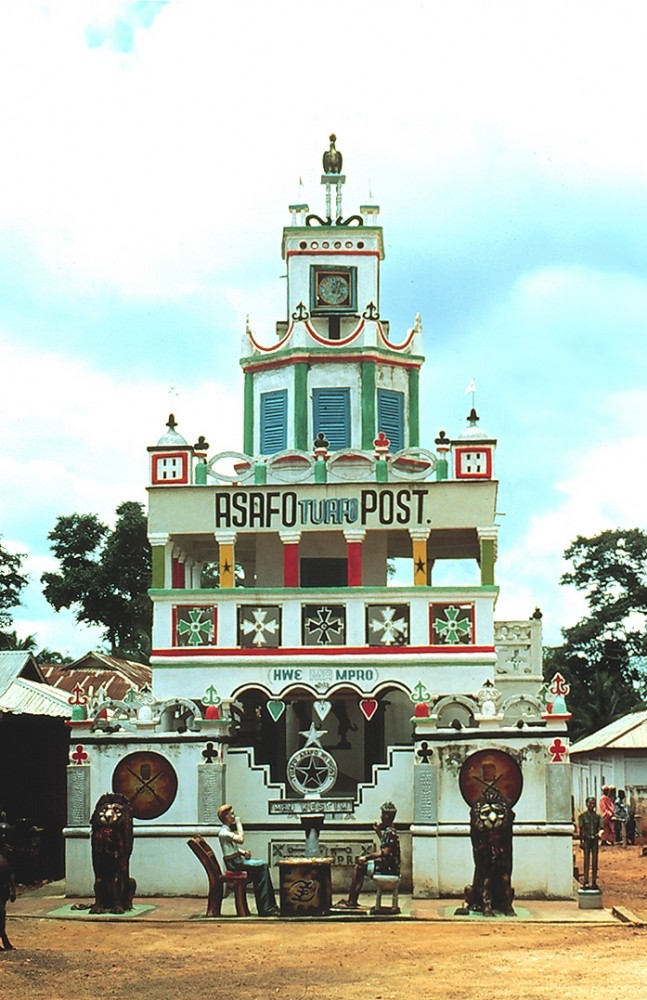Jan 25, 2016
Asafo Posuban
The arts of the traditional military companies of the Fantse, called asafo, are best known through the profusion of appliqué flags (frankaa). As has been detailed in multiple anthropological and historical studies, the asafo (sa, war, and fo, people) were the warrior groups or armies of the traditional Akan states. With their military roles almost fully usurped by the administration of the British Gold Coast Colony beginning in 1872, the asafo were forced to redirect their energies. This they did with considerable success, and they thrive today as potent social and civic organizations with significant political, ritual, and performance roles in most Mfantse states. Depending on whom you read, there are from seventeen to twenty-four traditional Fantse states (Christensen 1954:14 lists nineteen) with up to fourteen asafo companies per state. Within a state, each company is identified by a name and number, usually followed by the town or village in which it is located: e.g. Asafo Kyirem No. 2 Company, Mankesim.
In the Akan indigenous military organization, the Asafo groups are organized under Omanhene into: Twafo (Scouts, led by the Twafohene); Adontsen (Main Guard, led by the Adontsenhene), Nifa (Right Wing, led by the Nifahene), Benkum (Left Wing, led by the Benkumhene), Kyidom (Rear Guard, led by the Kyidomhene), and Ankobea (Home Guard, led by the Ankobeahene),
The asafo are also known for their cement shrines called posuban, which may be defined as fenced-in trees and/or sacred rocks or mounds designating a god. The artistically embellished shrines attract the most attention, especially the ones that have sculptures and are multi-storied buildings. The more elaborate structures are referred to as monumental posuban.
Considerably less kinetic and much less collectible than flags are the often spectacular cement shrines of the asafo called posuban, but more commonly referred to by the Fante themselves with the English words “post,” “fort,” or “castle.” These have frequently caught the attention of visitors to Ghana largely due to their perceived playfulness and to what is assumed to be their totally incongruous presence in the Ghanaian architectural milieu.
Labi (1998) recounts that Asafo Posuban of today are built in sandcrete in the form of one and two or multi-storey buildings, painted in bright colour and distinctly different from traditional rectangular houses with thatch or aluminum roofs. Labi could not hesitate to agree with Edusei and others that, the Posuban in its traditional form is a fenced tree and that by the close of the nineteenth century, the Asafo Posts had transformed its features to look like the Forts and Castles that stood on the coast of Ghana. Labi sees the Posuban as a host to other Asafo artworks like flags, emblems, drums and more. He also sees it as the conveying point and the pivot of Asafo activities. The Asafo Posts possibly serve as the storehouses of the Asafo military wears, regalia, flags, drums and other art pieces. The Company Posts also serve as the converging point or the rallying centres for the Asafo entirety. The Posuban acts as the headquarters of every Asafo Company.

